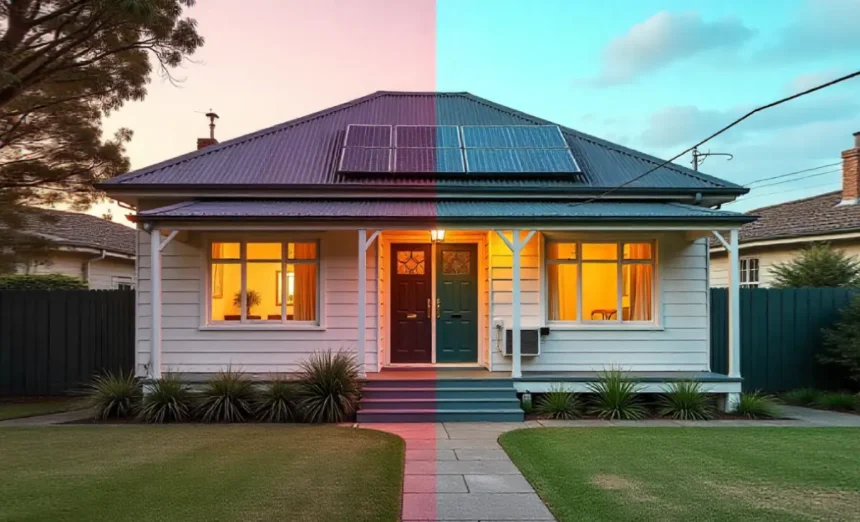Living in an older home brings character and charm, but soaring energy bills tell a different story. Your vintage property likely wastes hundreds of dollars annually through drafty windows, poor insulation, and outdated systems.
- Wall and Ceiling Insulation: Your First Defence Against Energy Loss
- Window and Door Sealing: Stop Drafts in Their Tracks
- Heating and Cooling System Upgrades
- Window Replacement and Upgrades
- Smart Home Technology Integration
- Exterior Shading and Ventilation Solutions
- Solar Power and Battery Storage
- Cost-Benefit Analysis and Prioritisation
- Government Incentives and Rebate Programs
- Professional vs DIY Installation Considerations
- Maintenance and Long-Term Performance
- Conclusion
Australian homeowners with houses built before 1990 face unique challenges. Single-glazed windows, minimal wall insulation, and aging heating systems create the perfect storm for energy waste. The good news? Strategic energy-efficient upgrades for older homes can slash your utility bills by 30-50% while boosting comfort year-round.
This guide reveals the most effective upgrades that deliver maximum savings with proven return on investment. You’ll discover which improvements to prioritise and how to tackle them without breaking the bank.
Wall and Ceiling Insulation: Your First Defence Against Energy Loss
Poor thermal performance ranks as the biggest culprit behind excessive energy consumption in older Australian homes. Most properties built before building code updates lack adequate insulation in walls and ceilings.
Ceiling Insulation Upgrades
Ceiling insulation delivers the fastest payback period among energy-efficient upgrades for older homes. Heat rises, making your roof space the primary escape route for conditioned air.
Install bulk insulation with R-values between R3.5 and R6.0, depending on your climate zone. Brisbane homeowners need R3.5 minimum, while Melbourne and Adelaide require R6.0 for optimal performance.
Professional installation costs $15-25 per square metre but saves $200-400 annually on heating and cooling bills. DIY installation cuts costs in half if you’re comfortable working in roof spaces.
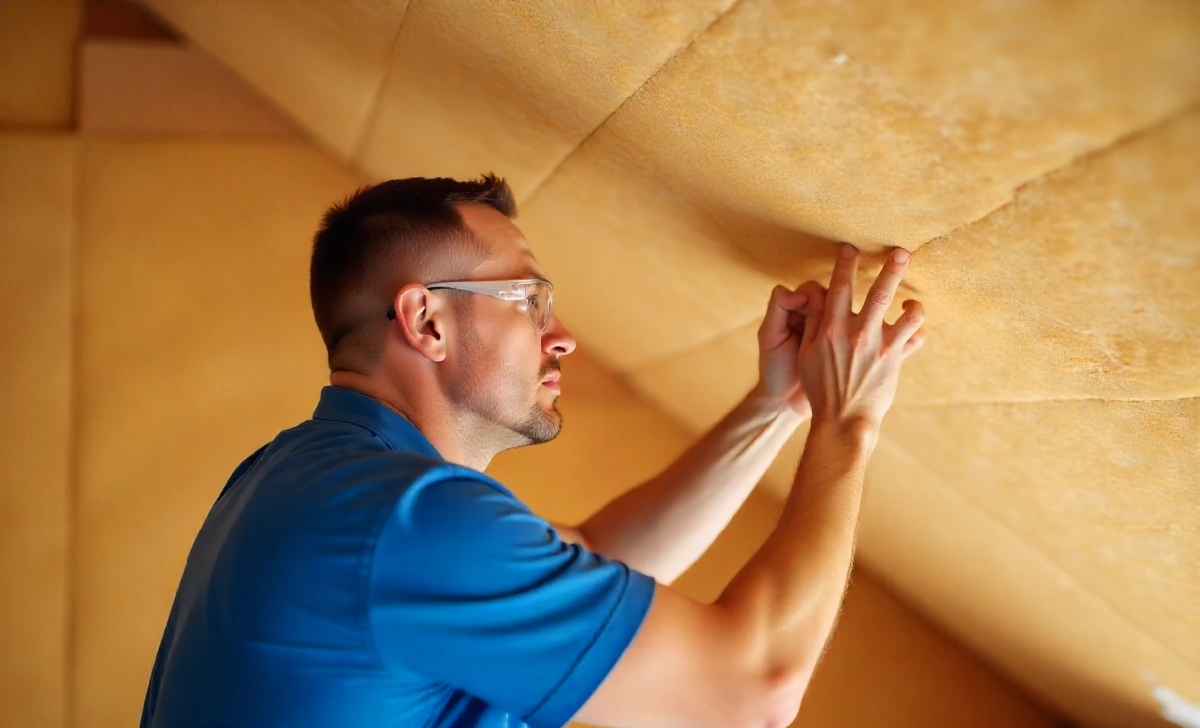
Wall Insulation Solutions
Wall insulation proves more complex in existing homes but offers substantial energy savings. Retrofit options include blown-in cellulose, polyester batts, or rigid foam boards.
Blown-in insulation works best for cavity brick walls, common in homes from the 1960s to the 1980s. Professionals drill small holes, inject insulation material, then patch and paint the holes.
Expect to pay $20-35 per square metre for professional wall insulation. Annual energy savings typically range from $300-600, creating payback periods of 8-12 years.
Window and Door Sealing: Stop Drafts in Their Tracks
Air leakage through windows and doors accounts for 25-30% of heating and cooling energy waste in older homes. Sealing these gaps provides immediate comfort improvements at minimal cost.
Window Weatherstripping and Caulking
Check window frames for gaps and cracks using the candle test. Light a candle and move it around the window edges on a windy day. Flickering flames reveal air leaks requiring attention.
Apply weatherstripping to movable window components and caulk stationary gaps. Quality materials cost $50-100 per window but last 5-10 years with proper maintenance.
Professional draught-sealing services charge $300-500 per home but guarantee comprehensive coverage. Many providers offer fixed-price packages including all windows and external doors.
Door Draft Stoppers and Seals
External doors often feature large gaps underneath, creating major air leakage points. Install door seals, brush strips, or automatic door bottoms to eliminate drafts.
Self-adhesive foam strips work well for door frames, while threshold seals address gaps underneath. Budget $20-40 per door for quality sealing materials.
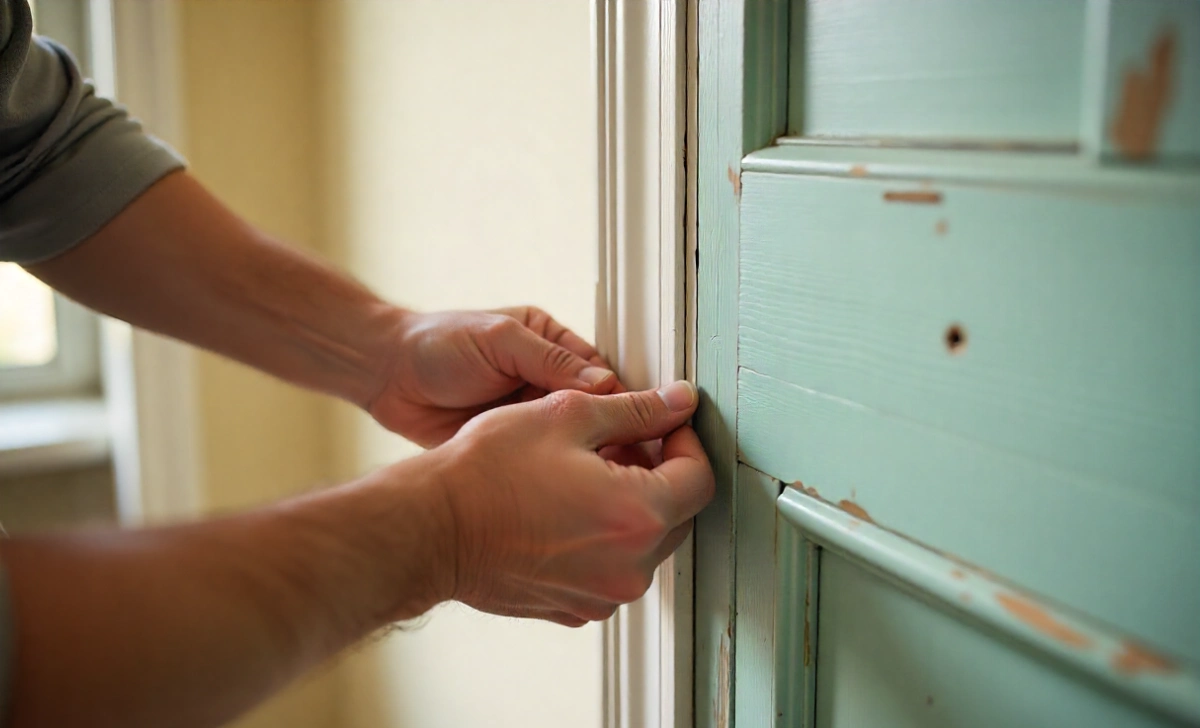
Heating and Cooling System Upgrades
Outdated HVAC systems consume excessive energy while struggling to maintain comfortable temperatures. Strategic upgrades deliver substantial savings with improved performance.
Reverse Cycle Air Conditioning
Replace old electric heaters and window air conditioners with modern reverse-cycle units. These systems provide both heating and cooling with exceptional energy efficiency ratings.
Look for units with 4-5 star energy ratings and inverter technology. Inverter systems adjust compressor speed automatically, reducing energy consumption by 30-40% compared to fixed-speed models.
Split systems cost $800-2000 per room, including installation. Multi-head systems serve multiple rooms from one outdoor unit, reducing overall installation costs.
Ducted System Zoning
Existing ducted systems waste energy conditioning unused rooms. Add zone control dampers to heat or cool specific areas only when needed.
Zone control systems cost $2000-4000 for most homes but reduce energy consumption by 20-30%. Smart thermostats with scheduling features maximise savings through automated operation.
Heat Pump Water Heating
Electric storage water heaters rank among the biggest energy consumers in older homes. Heat pump water heaters use 65-75% less electricity while providing the same hot water volume.
Installation costs range from $3000-5000 but deliver annual savings of $400-800. Government rebates often reduce upfront costs, improving payback periods to 3-5 years.
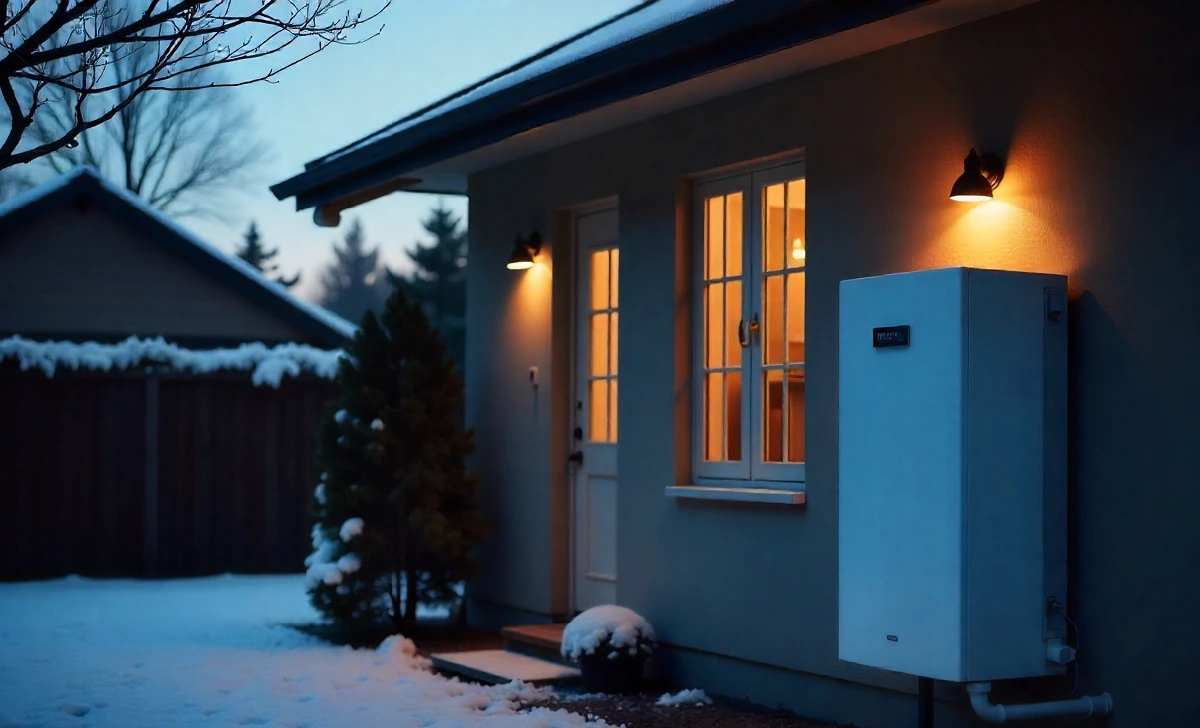
Window Replacement and Upgrades
Single-glazed windows in older homes create major thermal bridges, allowing heat transfer that undermines insulation efforts. Strategic window upgrades dramatically improve comfort and efficiency.
Double Glazing Solutions
Double-glazed windows reduce heat transfer by 50-70% compared to single glazing. The insulated glass units feature two panes with argon gas filling for superior thermal performance.
Retrofit double glazing costs $300-600 per square metre but provides 15-20 year payback periods through energy savings. Focus on north and west-facing windows for maximum impact in Australian climates.
Window films offer a budget alternative, reducing heat gain by 50-80% for $50-150 per window. Quality films last 10-15 years and significantly improve summer comfort.
Frame Material Considerations
Aluminium frames conduct heat readily, undermining insulation benefits. Timber or uPVC frames provide better thermal performance in energy-efficient window upgrades.
Thermally broken aluminium frames incorporate plastic barriers to reduce heat conduction. These frames cost 20-30% more than standard aluminium but deliver superior energy performance.
Smart Home Technology Integration
Modern technology transforms how older homes manage energy consumption. Smart systems optimise efficiency while providing convenient control over heating, cooling, and lighting.
Programmable and Smart Thermostats
Smart thermostats learn your schedule and preferences, automatically adjusting temperatures for optimal comfort and efficiency. These devices reduce heating and cooling costs by 10-15% through intelligent programming.
Installation costs $200-500 but creates immediate savings through better temperature control. Geofencing features adjust settings based on your location, preventing energy waste when you’re away.
Smart Lighting Controls
LED lighting upgrades combined with smart controls deliver substantial energy savings. Motion sensors, daylight sensors, and programmable schedules eliminate unnecessary lighting energy consumption.
Smart switches cost $50-150 per room but reduce lighting energy use by 60-80%. Automated controls ensure lights operate only when needed, maximising efficiency gains.
Your newly efficient lighting creates perfect conditions for indoor plants that thrive in low-light environments. These natural air purifiers complement your energy upgrades by improving indoor air quality without additional electricity consumption.
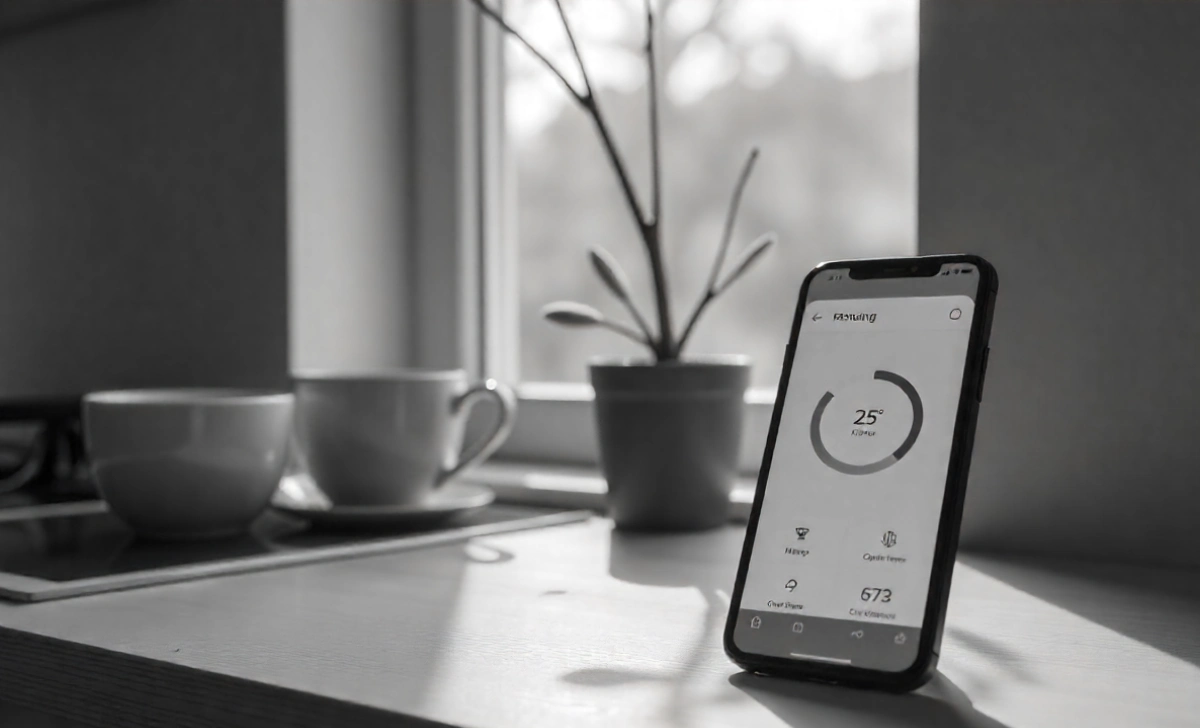
Exterior Shading and Ventilation Solutions
Passive cooling strategies reduce air conditioning loads while improving natural comfort. Strategic shading and ventilation upgrades work particularly well in Australian climates.
Window Awnings and External Shading
External shading blocks heat before it enters your home, proving far more effective than internal blinds or curtains. Fixed awnings, retractable systems, or shade sails provide excellent sun protection.
North and west-facing windows benefit most from external shading in Australian conditions. Quality awnings cost $200-800 per window but reduce cooling loads by 30-50%.
Deciduous trees planted strategically provide natural summer shading while allowing winter sun penetration. Fast-growing species like plane trees or Chinese elms create effective shading within 5-7 years.
Consider complementing your outdoor energy efficiency efforts with sustainable indoor gardening. Growing your own vegetables reduces grocery costs while improving indoor air quality through natural plant filtration.
Ventilation Improvements
Natural ventilation reduces air conditioning dependence while improving indoor air quality. Ceiling fans, exhaust fans, and strategic window placement encourage airflow through your home.
Whirlybird roof vents cost $150-300 installed and remove hot air from roof spaces. This reduces ceiling temperatures and overall cooling loads during summer months.
Cross-ventilation improvements involve creating clear airflow paths between opposite walls. Opening up internal doorways or installing transfer grilles facilitates natural air movement.
Solar Power and Battery Storage
Renewable energy generation transforms older homes into efficient, self-sufficient properties. Solar systems with battery storage provide energy independence while reducing utility costs.
Solar Panel Installation
Solar panels generate clean electricity while reducing grid dependence. A typical 5kW system costs $4000-7000 after government rebates and produces $800-1200 worth of electricity annually.
North-facing roof areas with minimal shading provide optimal solar generation in Australia. Professional assessment determines the best system size and panel placement for your property.
Feed-in tariffs allow you to sell excess solar generation back to the grid. Combined with self-consumption benefits, solar systems typically achieve 4-6 year payback periods.
Battery Storage Benefits
Battery storage systems capture excess solar generation for use during peak rate periods or power outages. Lithium batteries cost $8000-15000 but provide energy security and bill reduction benefits.
Time-of-use tariffs make battery storage more economical by storing cheap solar energy for use during expensive peak periods. This arbitrage opportunity improves battery payback periods significantly.
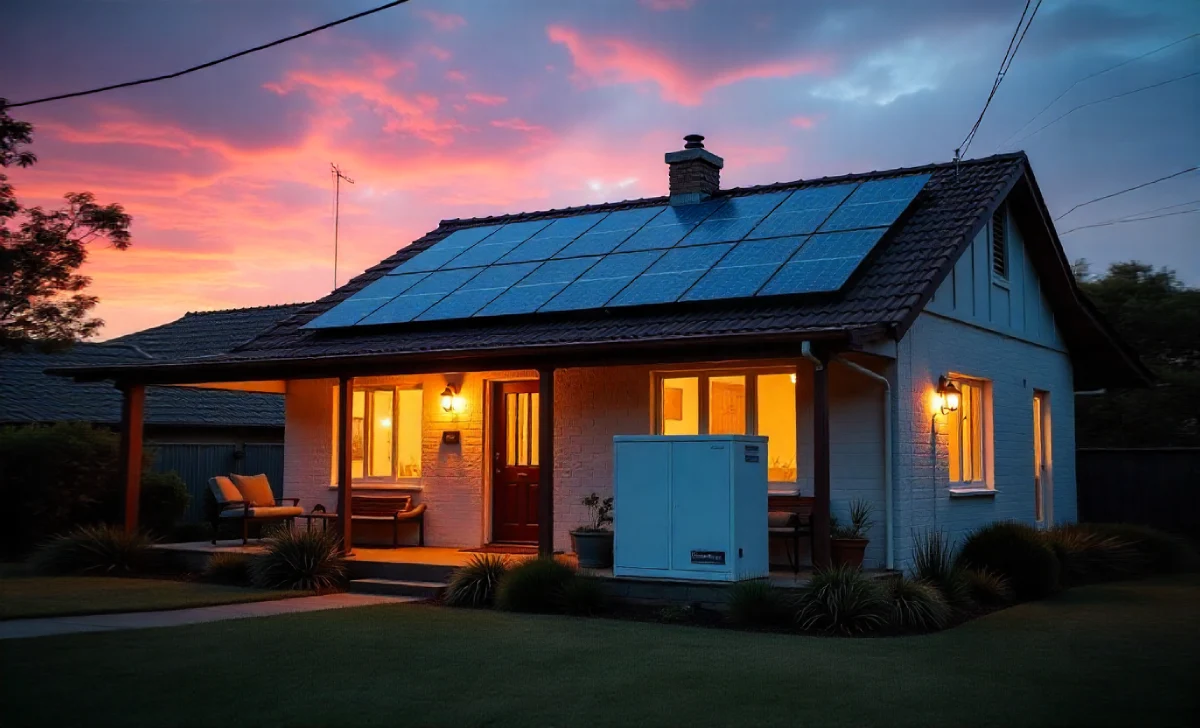
Cost-Benefit Analysis and Prioritisation
Energy-efficient upgrades for older homes require strategic planning to maximise return on investment. Understanding costs and savings helps you prioritise improvements effectively.
High-Impact, Low-Cost Upgrades
Start with improvements offering immediate savings at minimal expense:
- Draft sealing: $200-500, saves $300-600 annually
- LED lighting: $300-800, saves $150-300 annually
- Ceiling insulation: $1500-3000, saves $200-400 annually
- Programmable thermostat: $200-500, saves $150-300 annually
These upgrades typically achieve payback periods under three years while providing immediate comfort improvements.
Medium-Cost Strategic Investments
Second-tier improvements require larger investments but deliver substantial long-term savings:
- Wall insulation: $3000-6000, saves $300-600 annually
- Heat pump water heater: $3000-5000, saves $400-800 annually
- Reverse cycle air conditioning: $2000-5000, saves $400-800 annually
- Window upgrades: $3000-8000, saves $200-500 annually
Major System Overhauls
Large-scale improvements provide comprehensive efficiency gains:
- Solar power system: $4000-7000, saves $800-1200 annually
- Complete HVAC replacement: $8000-15000, saves $600-1200 annually
- Whole-house window replacement: $15000-30000, saves $500-1000 annually
Government Incentives and Rebate Programs
Australian governments offer various incentives to encourage energy-efficient upgrades for older homes. These programs significantly reduce upfront costs and improve project viability.
Federal Solar Rebates
The Small-scale Renewable Energy Scheme provides upfront discounts on solar installations. Rebates typically reduce system costs by $2000-4000, depending on system size and location.
Battery storage rebates vary by state, with programs in South Australia, Victoria, and the ACT offering substantial support. These rebates can reduce battery costs by $3000-6000.
State-Based Efficiency Programs
Victoria’s Solar Homes Program provides additional rebates for solar panels, solar hot water, and battery storage. Eligible homeowners receive up to $1400 for solar installations.
NSW offers interest-free loans for solar and battery installations through the Empowering Homes program. Loans up to $14000 make renewable energy accessible without upfront costs.
Utility Company Rebates
Major electricity retailers provide rebates for energy-efficient appliances and home improvements. AGL, Origin, and Energy Australia offer programs supporting heat pump water heaters, insulation, and smart thermostats.
Check with your electricity provider for current rebate offerings. These programs change frequently but often provide valuable support for efficiency upgrades.
Professional vs DIY Installation Considerations
Choosing between professional installation and DIY approaches affects both costs and outcomes. Understanding when to hire experts versus tackling projects yourself ensures successful upgrades.
DIY-Friendly Projects
Several energy-efficient upgrades for older homes suit competent DIY enthusiasts:
- Draft sealing and weatherstripping require basic tools and materials
- LED light replacement involves simple fixture swaps
- Ceiling insulation installation needs safety equipment and physical capability
- Smart thermostat installation requires basic electrical knowledge
DIY approaches typically halve project costs but require time, tools, and technical confidence. Safety considerations become paramount when working with electricity or in roof spaces.
Professional Installation Requirements
Complex systems require licensed professionals for safety and warranty compliance:
- Electrical work needs licensed electricians for safety and insurance coverage
- Solar installations require Clean Energy Council-accredited installers
- Gas appliances need licensed gasfitters for safety compliance
- Major HVAC installations require refrigeration licenses
Professional installation costs more upfront but provides warranties, insurance coverage, and guaranteed performance. Many rebate programs require professional installation for eligibility.
Maintenance and Long-Term Performance
Energy-efficient upgrades for older homes require ongoing maintenance to sustain performance benefits. Regular upkeep preserves efficiency gains and extends equipment lifespan.
Annual Maintenance Tasks
Create annual maintenance schedules covering key efficiency systems:
- Clean solar panels every 6-12 months to maintain generation capacity
- Replace HVAC filters quarterly to preserve efficiency and air quality
- Check weatherstripping and caulking annually, replacing worn materials
- Service heat pump water heaters annually for optimal performance
Performance Monitoring
Track energy consumption before and after upgrades to verify projected savings. Smart metres and monitoring apps provide detailed consumption data for analysis.
Solar monitoring systems track generation and consumption patterns, identifying optimisation opportunities. Battery monitoring reveals usage patterns and helps refine charging schedules.
Maintaining detailed records supports warranty claims and helps plan future improvements. Document installation dates, warranty periods, and maintenance activities for reference.
Conclusion
Energy-efficient upgrades for older homes transform comfort while delivering substantial cost savings. Strategic improvements reduce energy consumption by 30-50%, creating annual savings of $1000-2000 for typical households.
Start with high-impact, low-cost improvements like draft sealing and insulation before progressing to major system upgrades. Government rebates and incentives significantly reduce upgrade costs, improving payback periods across all improvement categories.
Professional guidance ensures you select appropriate upgrades for your specific home and climate conditions. Consider hiring energy auditors to identify priority areas and quantify potential savings before committing to major investments.
Ready to reduce your energy bills and improve home comfort? Start by sealing air leaks and adding ceiling insulation – these simple steps deliver immediate benefits while you plan larger improvements. What upgrade will you tackle first to begin your energy efficiency journey?
